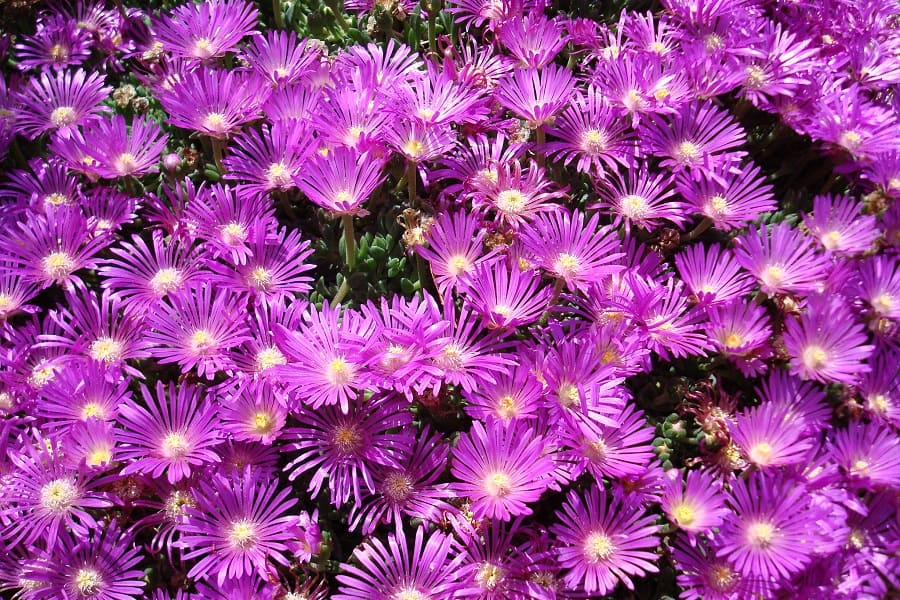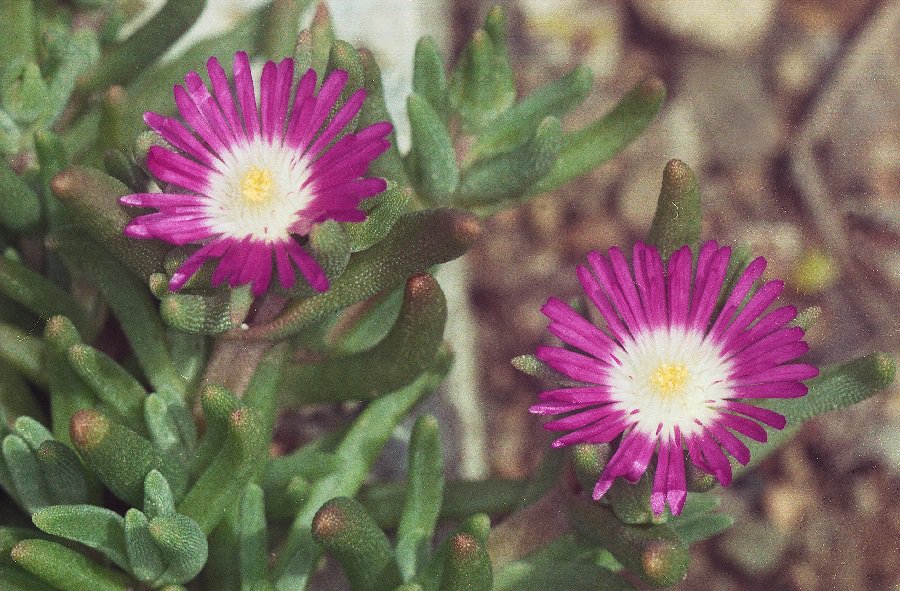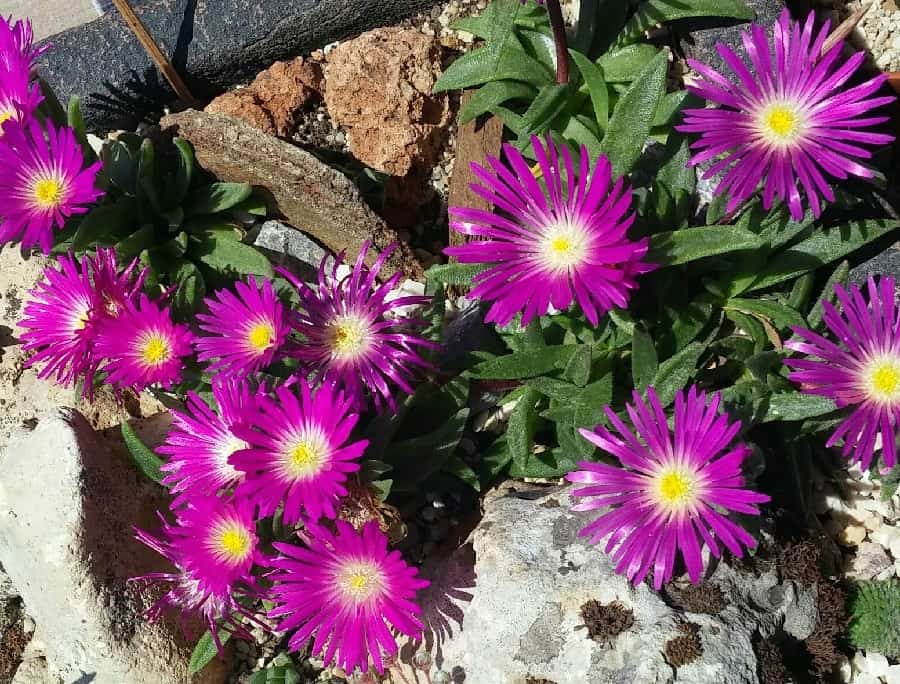Delosperma ashtonii: Characteristics and Care
Is your garden looking a little blah lately? Does it need a pop of vibrant color and effortless charm? Well, say hello to Delosperma ashtonii – your new best friend for transforming that drab outdoor space into a total showstopper! This tough little succulent is about to blow your mind (and liven up your landscape) with its striking good looks and easy-breezy care. Keep reading to find out why you need this ground-hugging beauty in your life!

Contents
About Delosperma ashtonii
Native to South Africa, Delosperma ashtonii (also called “Blut” ice plant) is a cold-hardy, drought-resistant gem that forms a lush, weed-smothering mat up to 3 feet wide. Each plant trails beautiful little angular green leaves along sprawling stems that top out around 4 inches tall. But here’s the real kicker – in summer and early fall, this baby absolutely erupts with a dazzling display of vibrant hot magenta daisy-like flowers with white centers! Talk about curb appeal.
Not only is it a total eye-candy, but Delosperma ashtonii also beckons bees, butterflies, and other precious pollinators with its gorgeous blooms. Plus, it’s virtually indestructible once established. Seriously, this plant can pretty much survive anything! It’s an absolute must for sprucing up rock gardens, filling in bare spaces, or adding some serious oomph as a weed-blocking ground cover.
Related Post:
1,000 Types of Succulents With Pictures
How to Care for Delosperma ashtonii
Light
Outdoors, Delosperma thrives in full sun and sheltered areas. If growing indoors, place the pot somewhere it’ll bask in plenty of bright, direct light – a sunny window or under a grow light works great.
Watering
When first planted and through summer’s scorchers, give Delosperma a good soak about once a week. But come winter, allow the soil to dry out completely between waterings. If you live somewhere with snowy winters, it’s wise to protect plants with a frost blanket or row cover to keep crowns and foliage nice and dry.
Soil
Delosperma does best in free-draining, relatively poor soils like sandy or gravelly loam mixes. Steer clear of dense clay that can drown the roots and cause rot. Amending with gravel mulch or bark chips helps increase drainage. Rich, moist garden soil is usually too heavy for these gals, especially in humid climates.

Fertilizing
These low-maintenance ladies don’t need much in the way of food. A light application of organic fertilizer in fall is plenty to keep them happy and discourage winterkill.
Temperature and Humidity
Delosperma ashtonii loves full sun and dry air. It’s a longtime perennial charmer in arid western climates (USDA zones 6-8), but will act as an annual in colder, wetter regions like zones 4-5. High humidity can lead to issues.
Pests and Problems
Wonderfully resilient overall, but can occasionally face threats from mealybugs, vine weevils, or aphids. Keeping plants well-spaced with excellent air circulation provides the best defense.
Pruning
A light pruning in fall, after blooms have faded, works wonders for reinvigorating these plants. Use clean shears to clip off spent flowers, lightly shaping plants to a uniform height. This prevents seedhead formation and keeps the carpet looking crisp. Remove any dead or damaged foliage as well. If cold winter temps cause die-back, shear closely to the ground – it’ll resprout with fresh growth come spring.

Potting and Repotting
When bringing these babies home, be sure to repot right away into a well-draining soil mix. Then plan to repot every 2 years or so if the plant outgrows its container. Crowded roots mean time for a bigger home!
How to Propagate Delosperma ashtonii
These cheerful little groundcovers readily self-sow if you’d like to let them spread naturally. But you can also start new plants yourself through seeds, cuttings, or division:
Seeds:
- Prepare an area of lightly raked, moist soil
- Scatter seeds and press gently into the surface
- Keep soil moist until germination, then allow to dry slightly between waterings
Cuttings:
- Take 2-4 inch stem cuttings, removing lower leaves to expose 1 node
- Allow cut ends to callous over for a few days
- Plant cuttings in well-draining soil, keeping in bright sun for 1 week
- Once new growth appears, move to direct sun and eventually transplant
Division:
- When repotting, gently split the rootball into 2 or more sections
- Replant each division into its own container with fresh soil mix
And there you have it – the super easy, ultra stylish way to naturalize some serious curb appeal with vibrant, pollinator-friendly Delosperma! This fabulous groundcover is basically garden goals. So what are you waiting for? Get out there and turn that drab outdoor space into a magazine-worthy masterpiece! Your landscape will thank you.
